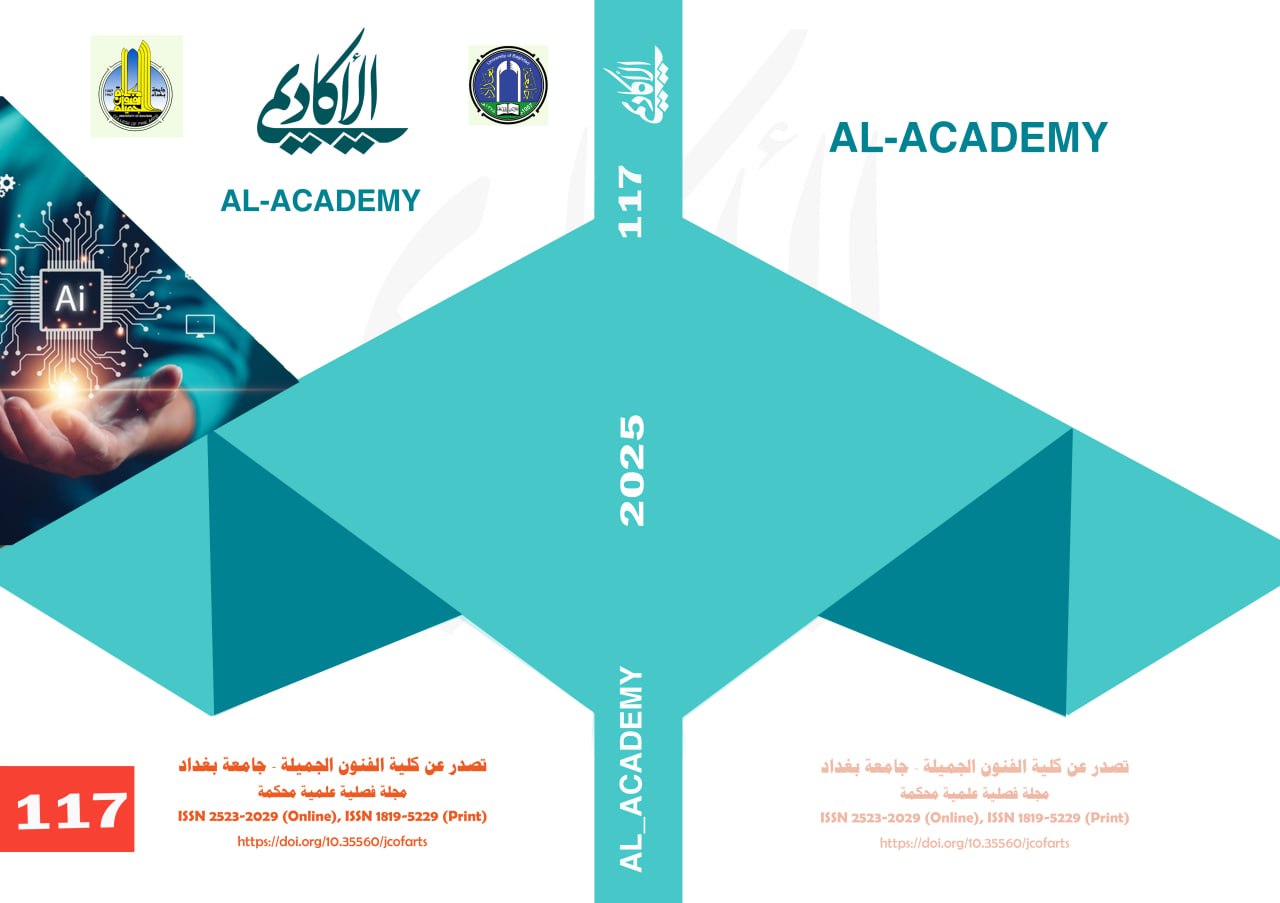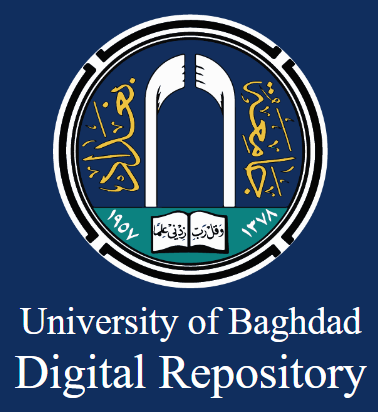Flexible systems and their effectiveness in designing interior spaces(Private university buildings as a model)
DOI:
https://doi.org/10.35560/jcofarts1406Keywords:
Systems, Flexible, EffectiveAbstract
The idea and philosophy of flexible systems and their effectiveness in the field of interior design came as one of the important influential points to confront future developments and to lay the foundations for achieving all functional and aesthetic requirements through the possibility of change, and the university system is one of the systems most affected by these changes. Through the preliminary exploratory study of such spaces, it was revealed that there is no identification of the influence of context. The functional and spatial pattern of these buildings depends on the degree of influence of these characteristics. Also, previous studies did not provide a clear definition of the characteristics that are most exciting in the flexibility of buildings in a way that meets the designer’s need for use in future designs and the possibility of evaluating the flexibility of building spaces from their initial plans. Due to the lack of a unified and effective flexible design system in university buildings, the research problem was defined through the following question: What is Applications of flexible systems and how effective are they in achieving the principles of design flexibility in designing the interior spaces of university buildings?
The importance of the research was embodied in clarifying the idea of flexible systems to employ aesthetic values in the design of interfaces by highlighting the trends of modern systems and the extent of their effectiveness in achieving technical integration and its role in design. The goal of the research included identifying the appearance characteristics of the elements and the aesthetic foundations of flexible organization, in accordance with the requirements of the design process. In order to achieve integration with the building’s functional, environmental and formal systems by shedding light on the trends of modern systems and the extent of their effectiveness in interior spaces. The second chapter includes the theoretical framework with its discussions on flexible systems in design. The second section includes flexible systems and their effectiveness in the design of interior spaces, up to To the third chapter, with its methodology and boldness. As for the fourth chapter, one of the most important results was that the flexible systems were achieved through the effectiveness of light, its type, intensity, and formal arrangements with the proportionality of the height of the ceilings and the light and dark spaces in the internal spaces of the model. As for the most important conclusions, there is a clear difference in standards in employing flexible systems for the elements. The design of the interior spaces and their relationship to the external façade within its integrated unit in addressing the design determinants, and the multi-functional technique is used to save space and volume by achieving multi-functional furniture and by integrating space elements (staircase, partition, window, door with furniture units). And to obtain hidden storage units. By combining them with space elements and furniture units.
References
- 1- Ibrahim Anis, Abdel Halim Montaser, Attia Al-Sawalhi, Muhammad Khalaf Allah Ahmad, Al-Mu’jam Al-Wasit, Part Two, Volume 1, 4th Edition, 2004.
- 10- Salah Ali, Sadad Hisham, the specificity of the interior design of art education spaces in distinguished schools, published research, Al-Academy Magazine, Issue 89, 2018.
- 11- Saliba, Jamil, “The Philosophical Dictionary”, Part Two, Dar Al-Kitab Al-Lubnabi, Beirut, 1982.
- 12- Al-Ani, Asmaa Sadiq Abdul Karim, “Flexibility of Thought and System,” an analytical study of the flexibility of the formal system of architectural space, Master’s thesis, unpublished, University of Baghdad, 2001.
- 13- Abdul Karim Mohsen, “The closed and open design of the architectural site and their impact on the social dimension in administrative buildings,” Islamic University Journal (Natural and Engineering Studies Series), Volume 16, Issue 1, Gaza, Palestine, 2008.
- 14- Al-Ali, Khalil Ibrahim, and others, The theoretical framework of the concept of formal unity in architecture as a system, Journal of Engineering and Technology, first issue, 2001.
- 15- Al-Farahidi: Abu Abdul Rahman bin Ahmed: Al-Ain, edited by: Mahdi Al-Makhzoumi, translated by: Ibrahim Al-Samarrai, Baghdad, National House for Publishing and Distribution, Volume One. 8, 1985.
- 16- Al-Fayrouzabadi, Majd al-Din Muhammad bin Yaqoub, Al-Qamoos Al-Muhit, Dar Al-Fikr Al-Hadith, Volume 1, Cairo, 2008.
- 17- Louis Maalouf: Al-Munajjid fi Language, Literature and Science, Beirut, Catholic Press, 1965. (p. 14).
- 18- Marwa Muhammad Qasim, and Rajaa Saadi Lafta, Balance and its Relationship in the Design of Interior Spaces, published research, Scientific Culture Magazine, Volume 9, Issue 1, 2023.
- 19- Muhanna, Ziad, Fakush, Uqba, and Waad Tannous, “Design flexibility as one of the most important criteria for economic housing,” published research, Damascus University Journal of Engineering Sciences, Volume Twenty-Nine (First Issue), 2013.
- 2- Ibrahim Madkour: Philosophical Dictionary, Arabic Language Academy, Egypt, 1979.
- 20- Al-Numan, Hussam Yacoub, The impact of the natural and cultural environment on shaping the spatial structure of rural population centers, doctoral thesis in the philosophy of architecture, University of Damascus, 2009.
- 21- Hala Muhammad Hassanein, “Modern trends in interior design for residential spaces, unpublished master’s thesis,” Faculty of Fine Arts, Helwan University, Egypt, 2008.
- 22- Al-Hinai, Ali bin Al-Hassan, “Al-Munajjid Dictionary of Language and Information,” Dar Al-Mashreq Publications, thirtieth edition, Beirut, 1988.
- 23- Wijdan Hussein, Alaa Al-Din Al-Imam, aesthetic dimensions and their morality in interior design, published research, Reggio Magazine, Issue 2146, 2021.
- 3- Ibrahim Madkour, “Philosophical Dictionary”, General Authority for Emiri Press Affairs, Cairo, 1983.
- 4- Ibn Manzur, Jamal al-Din Abu al-Fadl Muhammad ibn Makram, “Lisan al-Arab,” Dar al-Maaref, Cairo, 1961.
- 5- Abi Al-Hassan, Ahmed bin Faris bin Zakaria, Dictionary of Language Standards, vol. 5, 1979 AD.
- 6- Ahmed Mukhtar Omar, Dictionary of the Contemporary Arabic Language, first edition, first volume, World of Books,
- 7- Al-Baalbaki, Mounir, “Al-Mawrid Dictionary,” English-Arabic, Beirut: Dar Al-Ilm Lil-Malayen, 17th edition, 1983.
- 8- Baalbaki, Mounir, Al-Mawrid, Dar Al-Ilm Milan, Beirut, Lebanon, 1973.
- 9- Shaheen. Bahjat Rashad and Bashir Femi, “The University Building and its Adaptation to the Objectives of Higher Education,” Arab Center for Higher Education Research, Damascus, Engineering Consulting Office, College of Engineering, University of Baghdad, 1987.
- Abd alpader , Sabah ,S ,Abdullah ,Impact of Flexibility Principle on the Efficiency of Interior Design ,TuEngr Group Volume 5,No.3,2014.
- Abd alpader , Sabah ,S ,Abdullah ,Impact of Flexibility Principle on the Efficiency of Interior Design ,TuEngr Group Volume 5,No.3,2014.
- Adger .W .N .,”Social and Ecological Resilience: Are they Related ?Prog Hum Geog 24:347-364,2000.
- Al-Dabbagh, Shamael Muhammad Wajih Ibrahim, Foundations of Aesthetic Preference in the Aesthetics of the Language of Contemporary Interior Space, a letter submitted to the Department of Architecture at the University of Technology as part of the requirements for a Master's degree in Architecture, 2002.
- Alexander, Jean Mary, Designing interior Environment, Harcourt Brace Jovanovich, Inc., 1972.
- Al-Nijiadi,H.R,”Case Study, Cuba -Participation of Users and Construction Microbigades in Low income Housing”Projects,ICHPB,BIE,Holland,1981.
- boekholt,J.TH.Growth and design of morphological system, open house international,vol4,No3, ,(1979.
- Bruce Johnson ,ph.d,Walter W.Woolfolk,Robert Miller,Cindy Johnson,Pmp,”flexible Software Design Systems Development for Chaning Requirements” Taylor &Francis, Printed in the United States of America ,2005.
- Chin, Francis D.K., Interior Design Illustrated, van No strand Reinhold company, New York, 1987.
- Cuperus ,Ype, Open Building ,Open Future ,Open House ,international , vol18, (1993.
- Fawcett, W., ” Measuring Adaptability. Adaptability in design of Buildings” , Martin Center for Architectureal and Urban Studies ,New York, Des.,1976.
- Habraken,N,John.Intervention: Professional and User Inputs .design for Adaptability,vol15, ,(1980.
- Kronenburg, Robert,” Flexibile: Architecture That Responds To Change” Laurence King Publishing Ltd, London,2007.
- Krutch, Johan, and Eakins, Garret, Interior Architecture, van No strand Reinhold, New York, 1993.
- March,L and Steadman ,p the geometry of environment an introduction to spatial organization in design ,London ,riba .1972.
- Milner, Joy Mimico, and vodavarka, Frank, the interior Dimension: A theoretical approach to Enclosed space, van No strand Reinhold, New York, 1992.
- Oxford English Dictionary on line,2014, available at www.oxforddictionaries.com .
- Patrik , Schumacher ,”the Autopoiesis of Architecture Anew Frame Work For Architecture”Willey Sons Ltd,United Kingdom ,2011.
- Paul Jones, ”The Sociology of Architecture Construction Identities” Liverpool University,2011.
- Perin ,Constance ,”With Man in Mind ”Cambridge ,Mll Press,U.S.A,1970.
- Philippa levy, “conditions of flexibility” securing amore responsive higher education system,2014.
- Prins, M ”The Management of Building Flexibility in the Design Process: a Design Decision Support Model for Optimization of Building Flexibility in Relation to life Cycle Costs in: Nicholson ,M.P.,Architectural Management,1”Edition ,E &Fn Spon,London,( 1992).
- Richard De Neufville and Stevan Scholtes.” Flexibility in Engineering Design” Massachusetts Institute of Technology, usa,2011.
- Simon Unwins,”Analysing، Architecture”Third Edition ,Routledge,New York,2009..
- Templemants , Plat&Prins, M,Bax,J.C,&M.F.TH,Carp,,Adwsign Support System for Building Flexibility and cost in: Timmermans ,Harry,Design And Decision Support Systems in Architecture,Kluwer Academic Publishers, the Netherland, 1992.
- Timmermans, P.,THijssen ,P,.Veldhuisen ,J, ".Flexibility in Architectural Design" ,An Experimental. Journal of Architectural and planning research ,1987.
- Woodstock ,Robert V ,”The Five Points of anew Architecture in Earthquake Zones ”Global Earthquake Mode l, Programme Workshop ,Caribbean Regional ,2011.
Downloads
Published
Issue
Section
License
Copyright (c) 2025 Abdel-Zahra Odeh Hassan , Rajaa Saadi Lafta

This work is licensed under a Creative Commons Attribution 4.0 International License.













